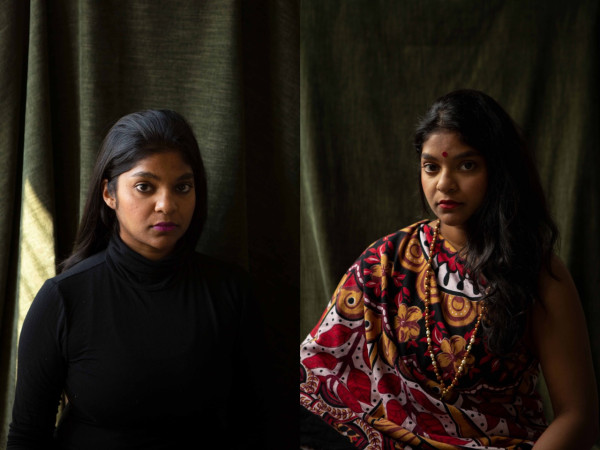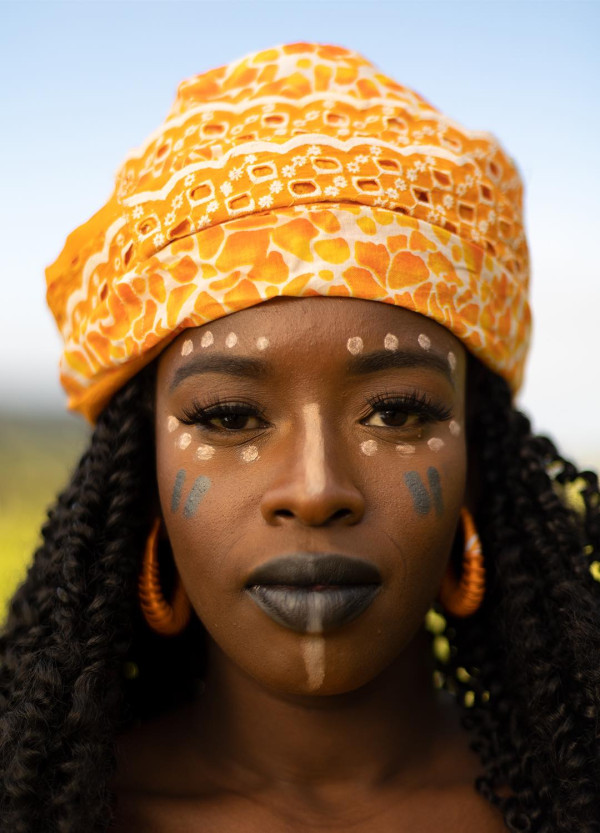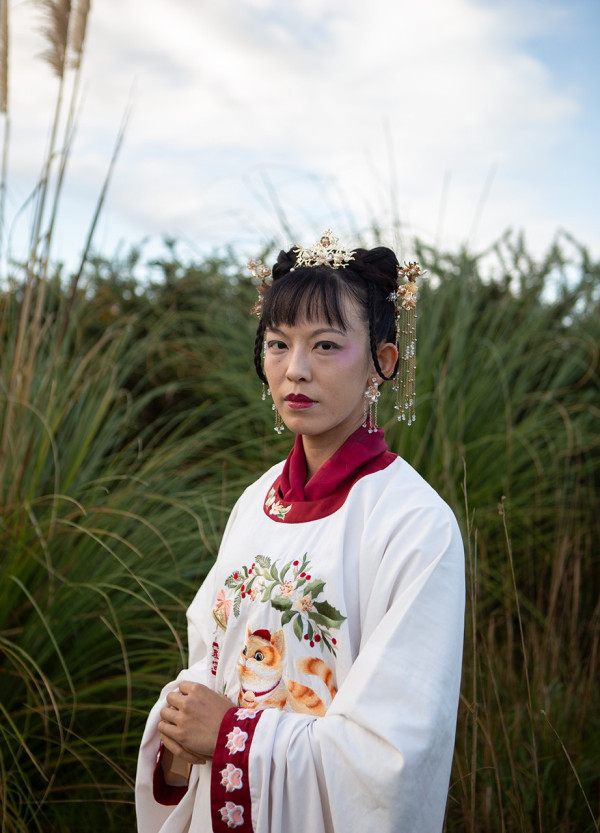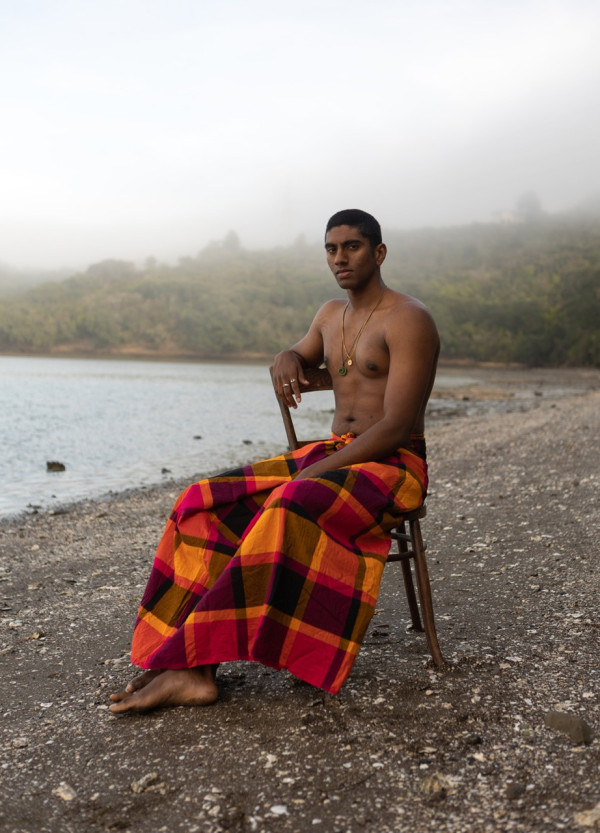When Abhi Chinniah was a young girl, she was exposed to colourism and given skin-bleaching products to use on her dark brown skin.
Today, she’s a self-taught portrait photographer whose work purposely features migrants and refugees of colour.
Abhi’s latest exhibition is called ‘A Migrant’s Path’ and it just opened at the National Portrait Gallery in Wellington.
Re: News journalist Janhavi Gosavi spoke with Abhi about migration, racism, photography and calling Aotearoa ‘home’.

Abhi Chinniah is a self-taught portrait photographer. Image: Abhi Chinniah.
Janhavi: Tell me about your migration journey
Abhi: Originally, we come from Jaffna in Sri Lanka.
Papa came to New Zealand in ‘73 [from Malaysia]... I was born in ‘92.
We were in Christchurch in the 70s, 80s and 90s. My early experiences at school there were… Memorable in interesting ways.
They made the choice to leave and go back to Malaysia where a lot of my family live.
We left when I was six.
I grew up in Malaysia on the East Coast and then I came back to New Zealand when I was 18.
I've been in Auckland since I came back, so I went to uni here and then I've been here ever since.

Kadijata, Melanin Rising. Image: Abhi Chinniah
Janhavi: What was growing up in Malaysia like?
Abhi: So I went to public school in Malaysia.
I was really like a fish out of water. I was very creative and I talked a lot. None of that was working in the schooling system there where they just want diligence.
I never really learned identity or sense of self in that way.
So it was always doctor, lawyer or — [like] my papa was — an accountant.
I was going to be any of those for all of my life.
I went from law to accounting into marketing, didn't tell mum and dad about that until I graduated. So marketing is what I have a degree in.
A lot of my income from marketing I channel into my art.

Soph Chin, A Migrant’s Path. Image: Abhi Chinniah.
Janhavi: How did you get into photography?
Abhi: I was in my early teens and I had a Sony point-and-shoot that Papa bought because he wanted me to take photos of Rotary Club dinners, because that was the social circle in this town that I was growing up in.
We were out one day and we met with a childhood friend of my father's and they were visiting from Australia. He had his daughter with him and she was studying photography at school.
And I remember thinking ‘Oh my gosh, like can you actually even do that?’ Because I was doing chemistry and physics and additional mathematics.
I found that I really liked photographing people and self portraits.
I still have these really horrific-looking portraits I’d take of my friends because I’d dress them up in whatever sarees and stuff Amma would have at home.. and take photos of them perched on a stool.
So the style kind of started then.

Radhika, A Migrant’s Path. Image: Abhi Chinniah.
Janhavi: Why do you photograph people of colour?
Abhi: Colourism has followed me all my life, like I remember skin lightening creams were given to me when I was seven.
I'd had something that happened in a previous job.
We were overseas on a work trip and we were all sitting at a table having dinner… And I was always the darker skinned person at this table.
This man starts motioning to me because he was talking about a lake in Australia somewhere.
And he said “Oh a muddy lake, a muddy lake, like her, like her”, and pointing to my skin.
And I just sat there and laughed. Although I had something trigger in me and that kind of shifted my art.
I started photographing people in a different way.
It was about the person and their heritage and their history and who they were in their melanin, and that would echo through all of my work until now.
Growing up in Malaysia… I was around a lot of different cultures because it's a multicultural country.
When I was setting out to make my art, I didn't want to exclude anyone necessarily in these groups because, being a minority in every country that I have existed in, I kind of know what it's like to be isolated and be othered.
And I did not want to do that with my work.

Suveen, Melanin Rising. Image: Abhi Chinniah.
Janhavi: Why do you photograph migrants in traditional clothes outside in New Zealand landscapes?
Abhi: We're here and this is home for a lot of us.
And what does home mean? For me, that's been a confusing thing.
But for my portrait sitters, that varies.
For instance, one of my portrait sitters, five generations of her family have been here.
It was so meaningful to photograph her on the landscape of Aotearoa and she talked about how she’s still asked where she's come from.
Even with the wearing of the traditional outfit, that was another layered choice.
My sarees and anything traditional would be in Malaysia but not in New Zealand and I wouldn't wear it here.
And when I was coming into myself, what I wanted to channel through my art as well, was being proud of these wonderful, unique stories and journeys and beautiful things that make up who we are.
But also the trauma and displacement that can come with all of that too.
And also because I am not trained as a photographer, so studios for instance… Well, number one, I couldn't afford them.
But I also wouldn't choose to photograph in the studio now anyway… I wouldn't even know what to do in there.
I just knew that I had a story to tell, and I knew that I wanted to photograph, and I was going to find a way to do it one way or the other.
This interview has been edited for length and clarity.
Banner: The Portal. Image: Abhi Chinniah.
More stories:
Should the learner licence period be twice as long?
We asked two young NZers what they think can help reduce NZ’s high youth road death toll.
‘I don’t finish until midnight’: Life as a teen juggling school and work
Lauren Shaw has a decision to make - keep working in her grandparents’ shop or follow her dreams.
Coming together to celebrate the Māori King's legacy
Teahi Forbes attended the tangi and shares her experience.